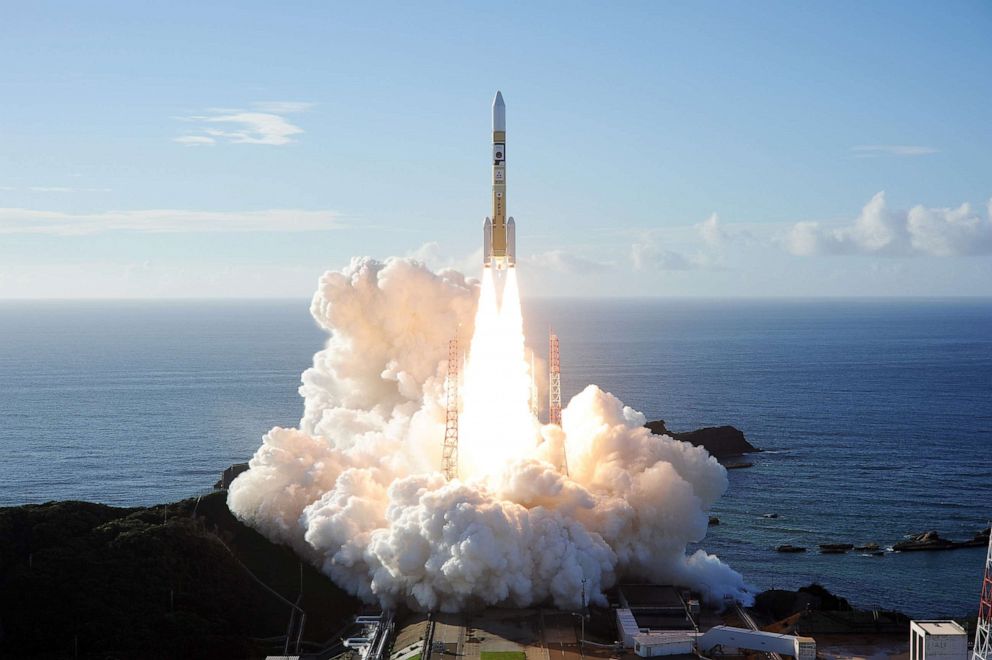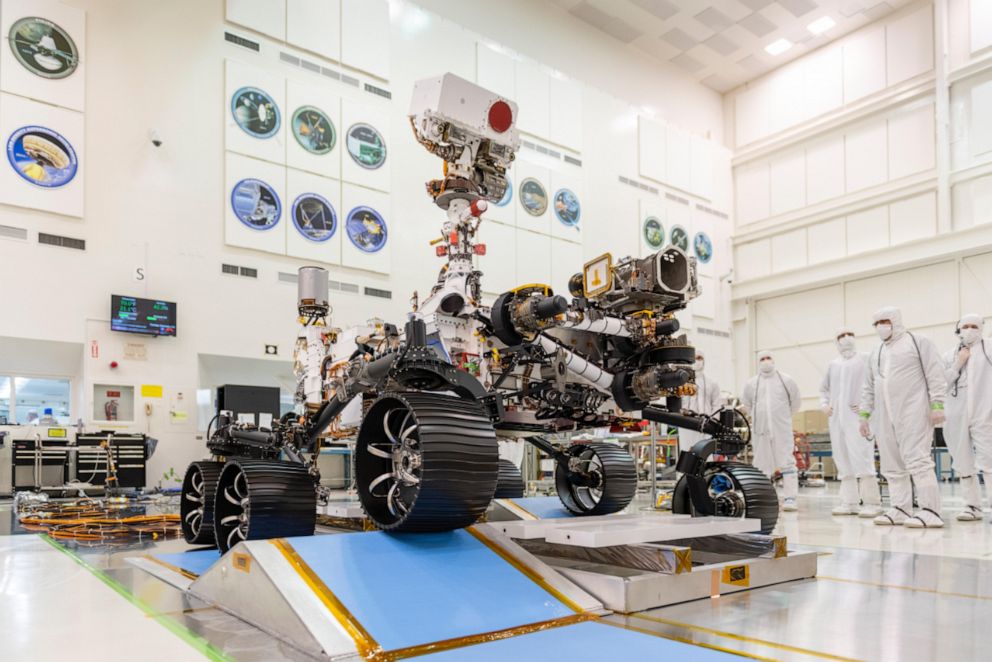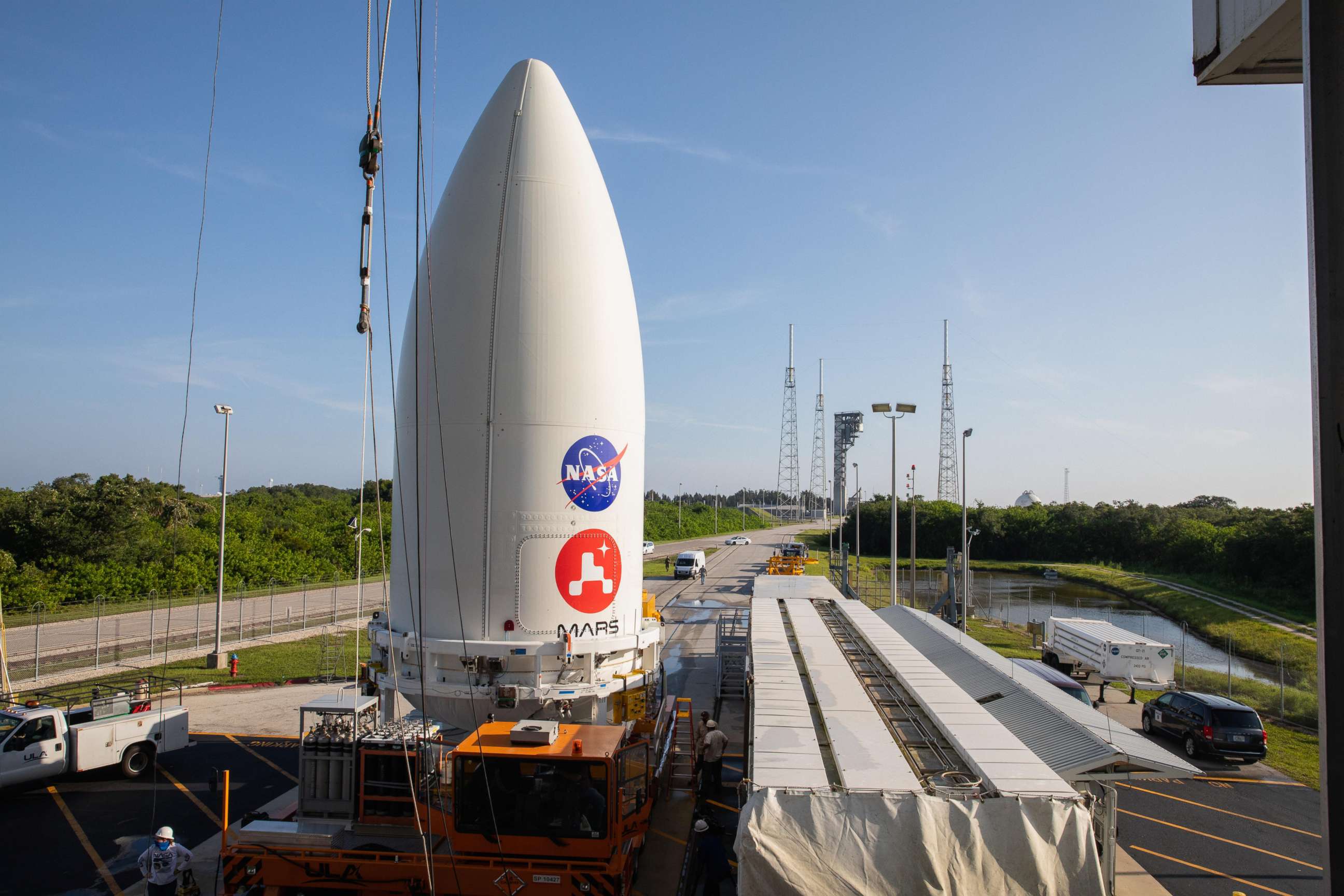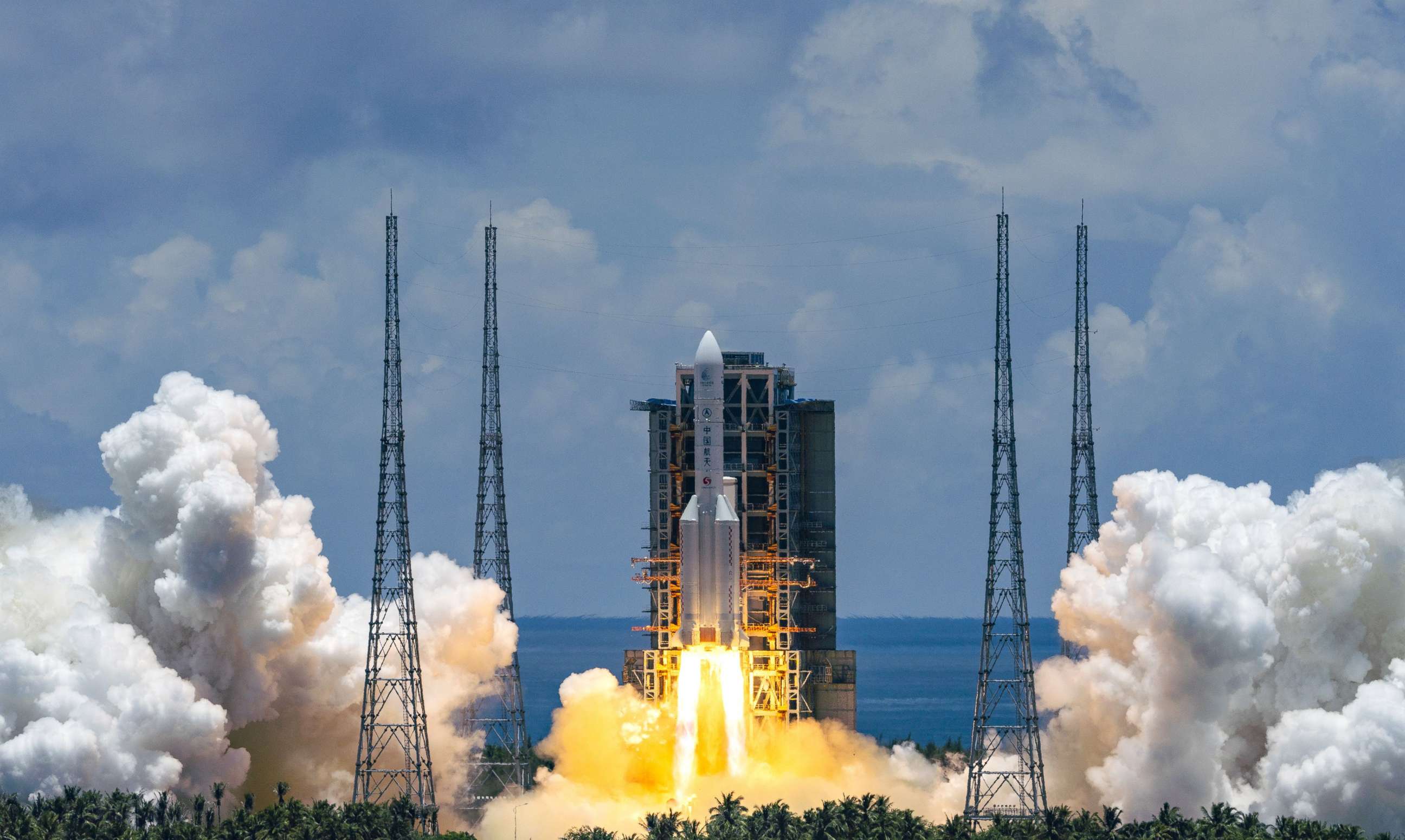What to know about China, UAE and US missions to Mars this summer
Three nations are taking aim at the Red Planet this month.
Like something out of a science fiction film, three nations on Earth are heading to Mars this month -- commencing a new, deep space race to explore the Red Planet.
Earlier this month, the United Arab Emirates launched its first-ever deep space mission, sending an orbiter to Mars from Japan's Tanegashima Space Center. China followed earlier this week with its ambitious Mars mission launching from Hainan Island in an attempt to be the first country other than the U.S. to successfully land on Mars.
Next up, the United States is set to launch its Perseverance rover to our neighboring planet July 30 from Cape Canaveral Air Force Station in Florida.

While the triple missions are all unique, "the fundamental question that everybody would like an answer to is, was there ever life on Mars?" John Logsdon, a professor emeritus at George Washington University's Space Policy Institute, told ABC News.
"Is there any possibility that there is still some sort of microbial life, not little green men, but has life ever existed and might it still exist?" he added. "Then the next level of generality is, what will it take for humans to live on Mars?"
America's six-legged Perseverance rover is the size of a small car and has the goal of storing rock and soil samples that can be returned to Earth in future missions. It will also test out new technology to pave the way for future robot or human exploration of our neighboring planet, according to NASA.

"There are a bunch of other neat things. There is an attached little helicopter that is going to fly like a drone over the Martian surface and give us images," Logsdon said of the U.S. mission. "There is an experiment called 'MOXIE' that will see whether it is possible to manufacture oxygen out of the methane in the Mars atmosphere, which would be important for eventual human missions."

The reason all the launches to Mars are happening now is because it is the peak orbit points for when it takes the least amount of energy to get to Mars, which happens every 26 months, according to Logsdon.
The UAE mission is sending an orbiter, which won't land, Logsdon added, saying, "It's done in collaboration with the University of Colorado; the UAE. is overseeing the mission, but there is a lot of U.S. contribution." It is history-making in the sense, however, that it is the first time an Arab nation has launched into deep space.

"This mission is an important milestone for the U.A.E. and the region and it has already inspired millions of youth regionally to dream big and work hard to achieve what seems impossible," H.E. Yousuf Hamad Al Shaibani, deputy chairman and director general of Mohammed Bin Rashid Space Centre, said in a news conference following the launch.
Meanwhile, the Chinese mission is "an extremely ambitious mission that has an orbiter, a lander and a rover," Logsdon said. "And it is reflective of how ambitious China is to do significant space activity."
China's inaugural Mars mission is named Tianwen-1, which means "Questions to Heaven" and comes from an ancient Chinese poem, according to the nation's state-run news agency Xinhua.
"We hope the mission will be innovative and help push forward scientific and technological development," Geng Yan, an official at the China National Space Administration, told Xinhua. They have a multipart goal that includes landing a rover on the surface of Mars that will conduct research.
Liu Tongije, a spokesperson for the China Mars mission, said the launch was a "key step of China marching towards farther deep space," and that the nation's aim wasn't to compete with other countries but to peacefully explore the universe, according to The Associated Press.
Despite elevated political tensions between the U.S. and China, "I don't think these missions have anything to do with dominance [of space]," Logsdon said.

"They are competitive because scientists are competitive and everyone wants to do the best kind of science and discovery on Mars possible, but in the broader scheme of the things the world profits by multiple missions," he added.
"We want to learn about Mars, and the more missions that are aimed at learning about Mars, the better off we are," he said. "The one mission can't keep the other one from working."
Still, Logsdon noted that U.S. legislation prohibits NASA from working with China.
"That prohibition is politically based, so collaboration between what in the coming years are probably the two major space powers is currently forbidden by U.S. law," he said.
He noted that by and large the scientific community has been able to keep the politics and research separate.

As for how soon we can expect to see humans on the Red Planet, Logsdon said that "depends on whether you believe Elon Musk or not."
"Mr. Musk says he's going to be sending a number of people to Mars in the not-very-distant future," he said. "I'm highly skeptical. There's a lot of difference between the first explorers going to Mars and tourism."
Still, he said he thinks there is a "reasonable chance" that there will be human footsteps on Mars by 2040.




